Increase operational efficiency, redirect resources to grow revenue, and reduce the cost of doing reconciliation and accounting of blockchain transactions.
Table of Contents
Introduction
The proliferation of blockchain technology and digital assets in enterprise settings has been remarkable. Digital asset businesses can capitalize on blockchain's unique features, including fast settlement, low transaction fees, and transparent transactions, to streamline accounting processes and eliminate the need for error-prone spreadsheets, but blockchain transaction reconciliation presents a host of other challenges.
Businesses operating in the digital asset space frequently face hurdles during practical implementation that impede their ability to fully harness the potential of the technology. One common challenge lies in blockchain transaction reconciliation, which, in theory, should be a straightforward process considering the data's availability on the blockchain. However, due to the effort required to prepare the data for analysis and reporting, this reconciliation process often consumes considerable time and resources.
The challenges stem from the decentralized nature of blockchain, which can result in a disconnect from the real-world context typically required to operate a business effectively. The use of various data formats and protocols across different blockchain networks adds complexity and creates a notable hurdle for companies seeking to run operations using data from both on-chain and off-chain sources.
The Challenges of Blockchain Transaction Reconciliation
Increased interest in cryptocurrency as a means of investment has opened a Pandora’s Box of new complications for businesses operating in the digital asset space. For companies that are eager to operate in a manner that is fully compliant with regulatory requirements and operational guardrails, these new complications are no small matter.
Most digital asset businesses operate, monitor, and interact with multiple wallets, often numbering in the tens of thousands in order to comply with regulatory, client, operational, and security requirements.
Take the example of Business A that operates a digital asset OTC (Over-The-Counter) desk. To successfully facilitate an OTC trade, the OTC desk may need to buy and sell tokens through a parade of transactions between multiple parties like centralized exchanges (CEXes), liquidity providers, and DeFi protocols. Every time a digital asset is transferred from one wallet to another, a new blockchain transaction is initiated. Reconciliation must be done for each transaction to ensure accounting accuracy and auditability of the company’s books and records.
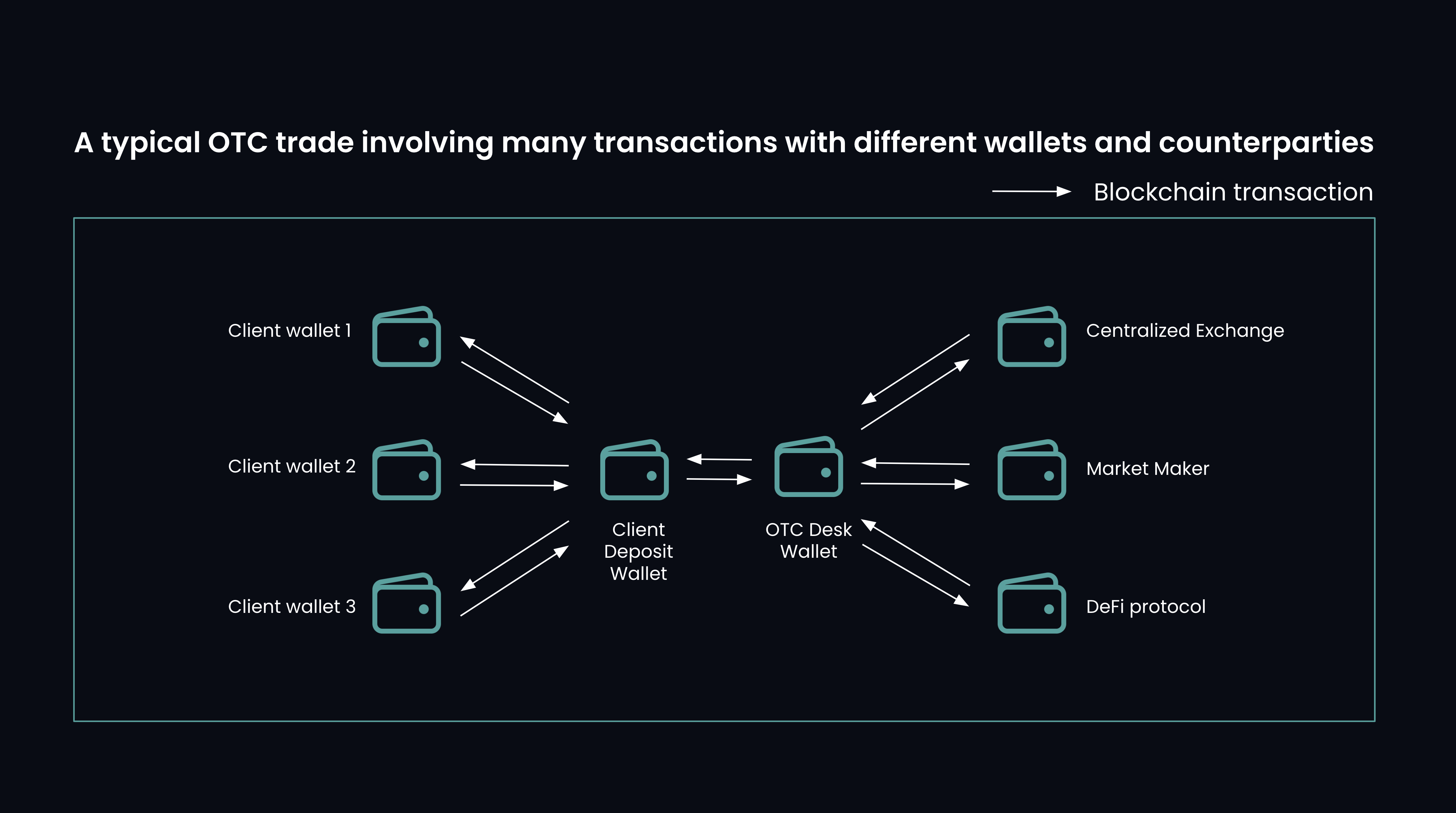
Despite significant investments in various on-chain and off-chain accounting tools, Business A struggles to efficiently perform blockchain transaction reconciliation against internal systems. Despite its loaded toolbelt, it cannot help the firm overcome the fact that 30% of all OTC trades still require significant manual workarounds to consolidate data from various data sources and format them into sets of spreadsheets to perform reconciliation.
Time costs of transaction reconciliation
Under current suppressed market conditions, reconciliation for a single OTC order can take up to 2 weeks. However, blockchain transaction reconciliation time costs will increase dramatically if and when market conditions improve and on-chain activity rises for an extended period, which will inevitably expose the operational bottleneck and lead to severe revenue loss.
Adding insult to injury, firms may have very little or absolutely no visibility into Decentralized Finance (DeFi) trading activities. As that sector of the crypto space grows, DeFi will become an inextricable part of OTC trading activity that needs to be fully traceable for reconciliation and auditing purposes.
Navigating the intricate landscape of digital asset transactions already poses significant challenges for firms tracking simple transfer transactions between their own wallets, client wallets, and centralized counterparties. With the rise of DeFi, maintaining a comprehensive and accurate view of the books becomes exponentially more difficult.
The Solution with Blockpour Recon
Blockpour Recon is a purpose-built solution designed to tackle the unique challenges encountered by digital asset businesses in their mid-and-back-office operations. Through in-depth discussions with stakeholders and partners, we have recognized the need for a unified solution that automates the retrieval and consolidation of multi-chain data, integrates valuable off-chain data to provide essential business context, and delivers the data in an intuitive manner that allows business users to effortlessly interpret insights and take prompt action.
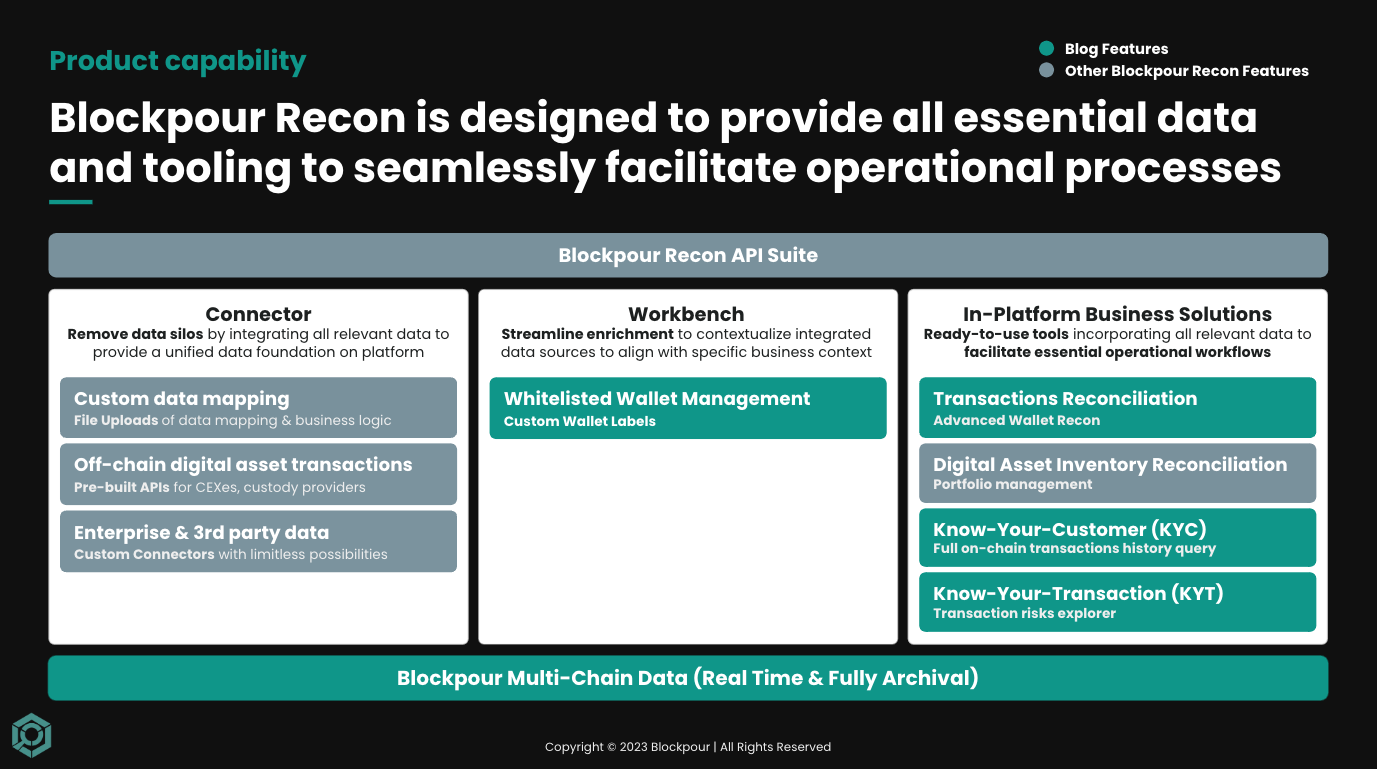
Among the key demands expressed by enterprise firms in the industry is a day-to-day tool that seamlessly integrates on-chain and off-chain data with essential operational workflows. Blockpour Recon fulfills this need by leveraging our robust data pipeline to enable operational capabilities, such as address whitelisting, Know-Your-Customer (KYC) compliance, reconciliation, and Know-Your-Transaction (KYT), all conveniently accessible within a single platform.
Seamless extension of wallet whitelisting processes
With this powerful feature, enterprises are able to securely store and manage whitelisted addresses while incorporating relevant context through custom entity labels. This enables instant identification of whitelisted addresses by associating them with relevant entities such as internal business units, counterparties, or individual KYC'ed client profiles. When combined with Blockpour's multi-chain data and proprietary on-chain wallet labels of CEXes, market makers and DeFi protocols, users can effortlessly obtain a holistic view of consolidated on-chain activities across wallets and chains with just a simple button press.

Directly query real-time and historical transactions to simplify the reconciliation process
With all relevant data available within the platform, Blockpour Recon users can query specific transactions by specific parameters, such as date, time, incoming/outgoing entities or addresses, tokens, and transaction amount. One of the key advantages of Blockpour Recon is its ability to examine the complete on-chain transaction history of a specific whitelisted entity.
Whether the entity is an internal business unit for identifying blockchain transaction reconciliation disprepancies or a KYC'ed customer for detecting abnormal transfer patterns, Blockpour Recon provides a one-stop solution that eliminates the need for users to source data from spreadsheets, internal systems, or blockchain explorers.
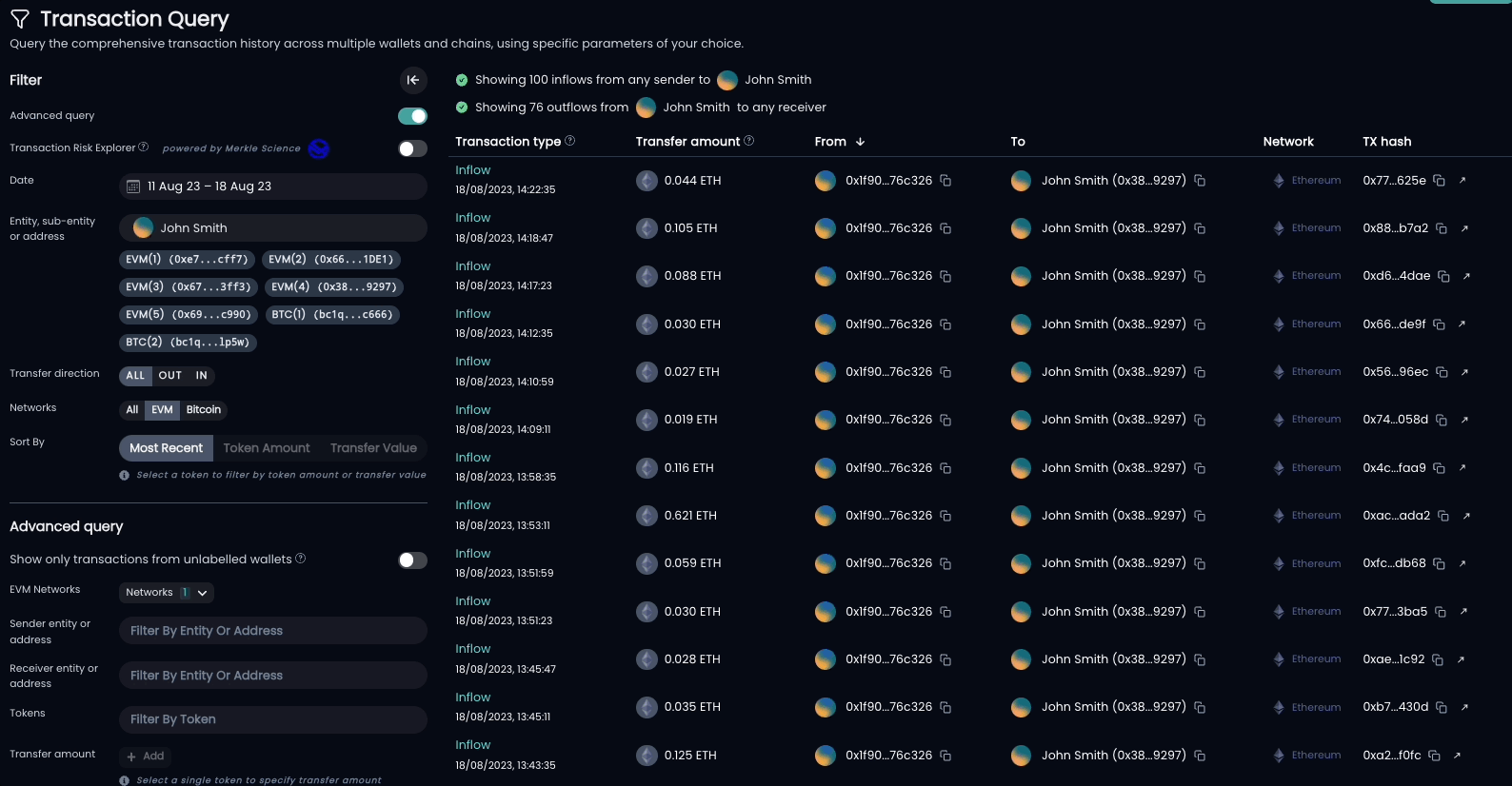
Streamline KYT by integrating risk metrics from Merkle Science
Our strategic partnership with Merkle Science, a predictive Web3 risk and intelligence platform, brings additional insights into Blockpour Recon.
By seamlessly integrating Merkle Science's transaction monitoring solution, Blockpour Recon empowers users to access real-time and historical transaction risk metrics of relevant entities and addresses directly on our platform. This additional layer of information facilitates identification and investigation of non-compliant activities and suspicious transactions.
With all these capabilities directly accessible on the platform, users can continuously monitor and investigate abnormal transactions and patterns of KYC'ed entities, eliminating the need to switch between multiple platforms for accessing KYC information, on-chain history, and compliance indicators.

By consolidating capabilities under one platform, Blockpour Recon eliminates data silos across systems and streamlines efficient information sharing between operational processes that were once isolated. This integrated approach aims to reduce the need for expensive custom in-house solutions and minimize investments in multiple specialized systems dedicated to different aspects of the process, ultimately enabling businesses to redirect valuable resources to achieve their commercial objectives.
About Blockpour
Blockpour is a technology firm specializing in Web3 data and analytics, offering individuals and businesses indispensable data and tools to navigate the dynamic on-chain universe while bridging seamlessly to the off-chain world.
Through our real-time and historical multi-chain data feeds, businesses and traders can fully unlock the power of blockchain data to inform their strategies, optimize operational efficiency, and drive top-line growth.
To learn more about Blockpour check out our website and follow us on Twitter or LinkedIn. For sales or inquiries about the API, contact [email protected].
Disclaimer
The above article is for informational purposes only and is not financial advice. Blockpour is a data aggregation and analytics platform only and does not provide financial advice or services of any kind.
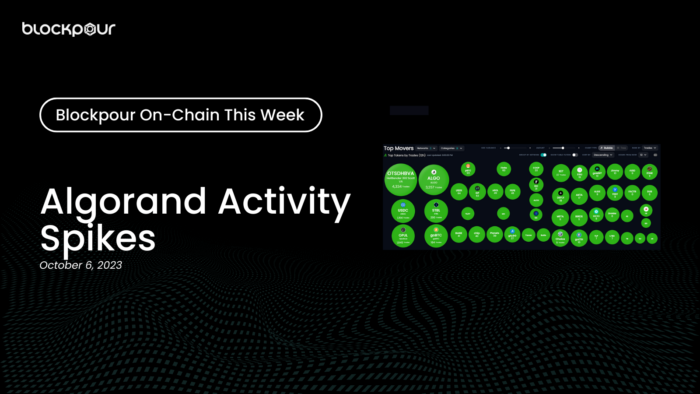
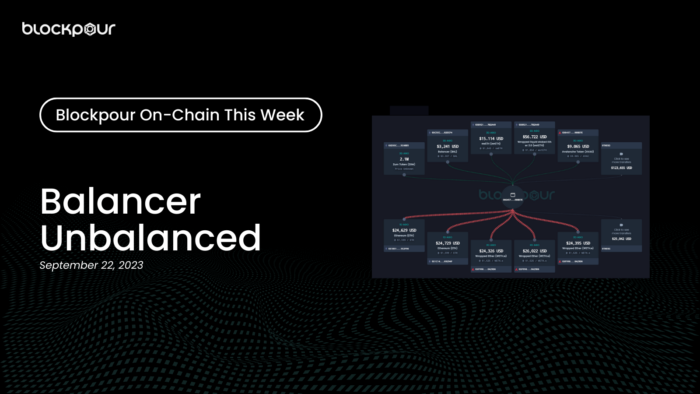





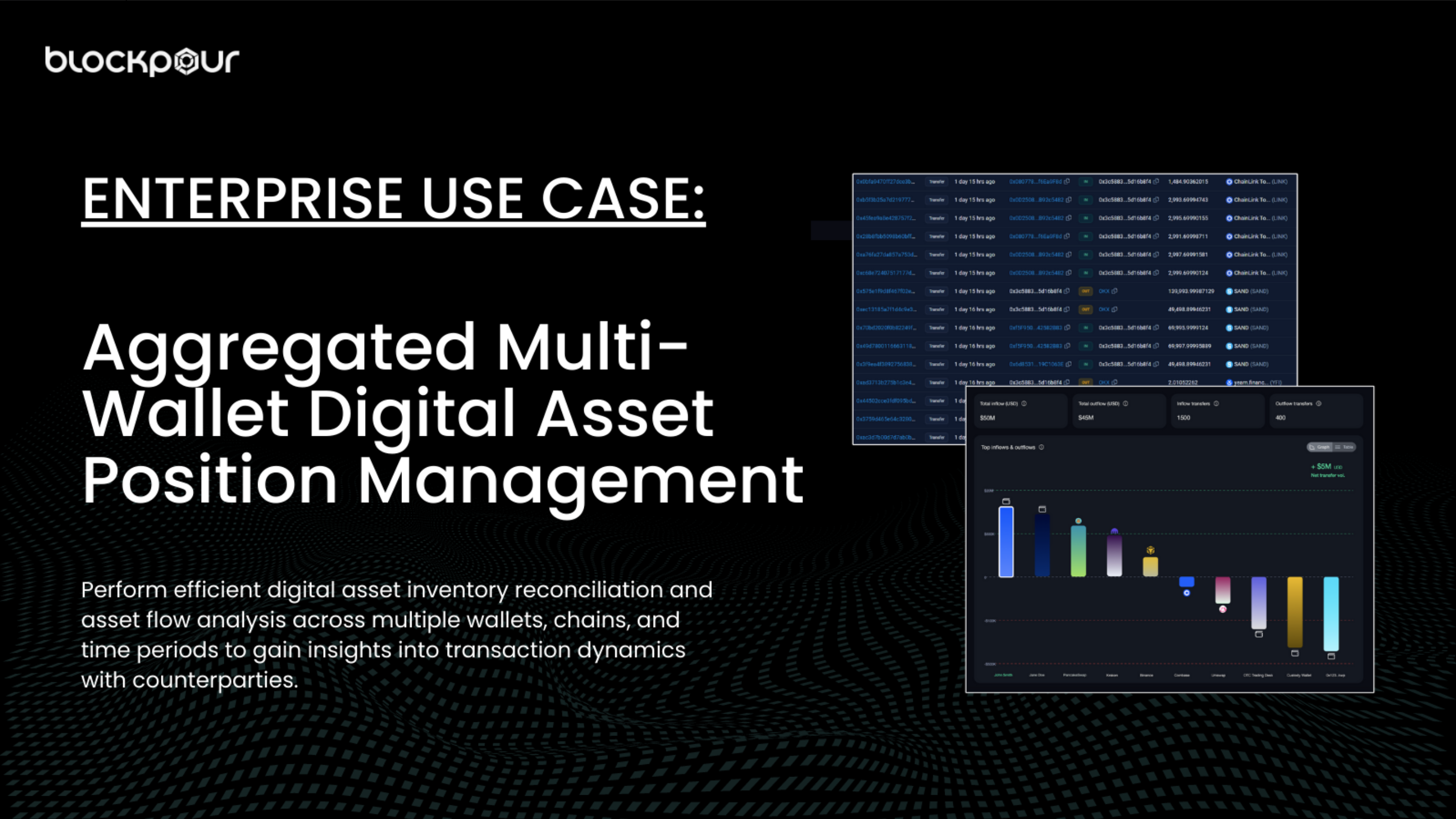
Permalink